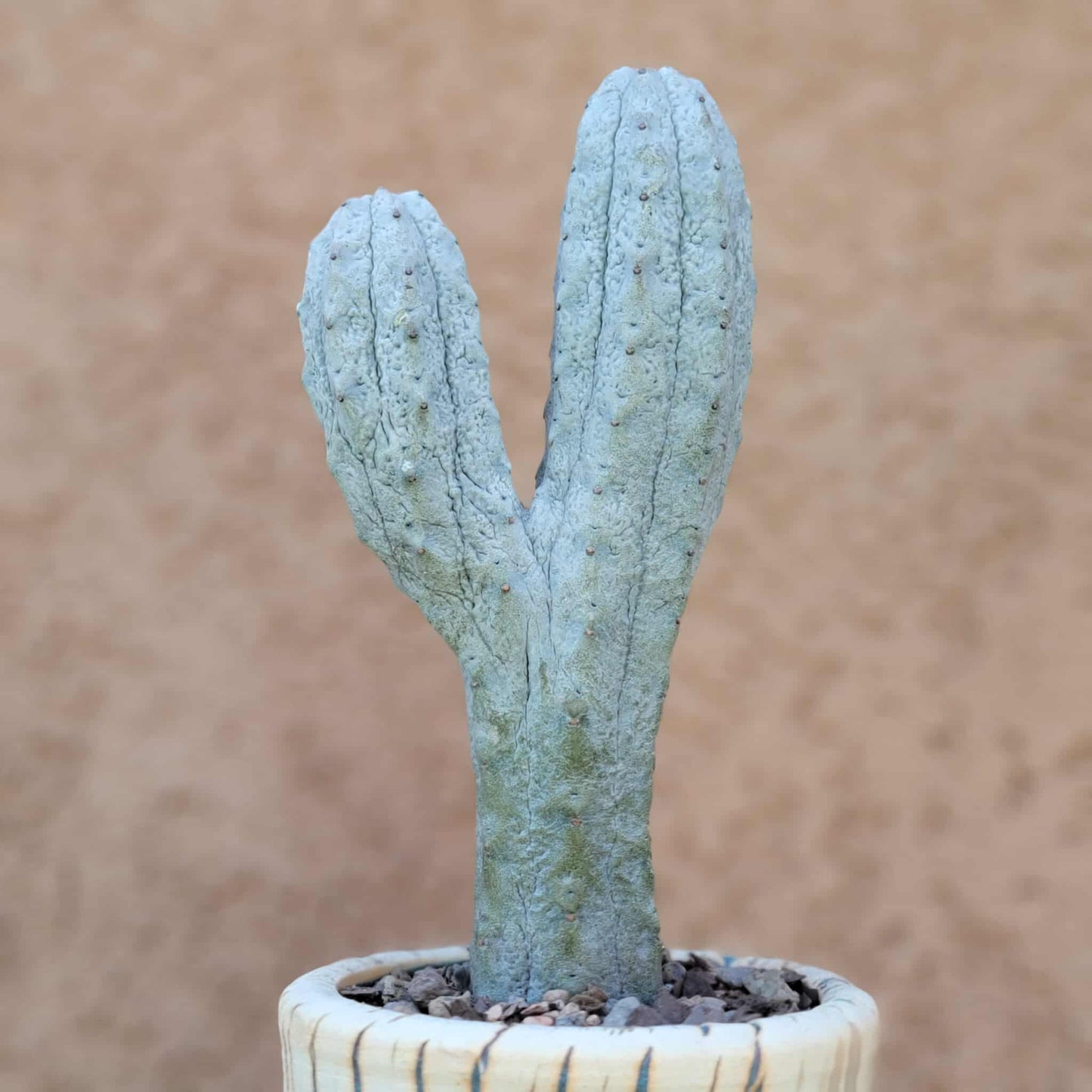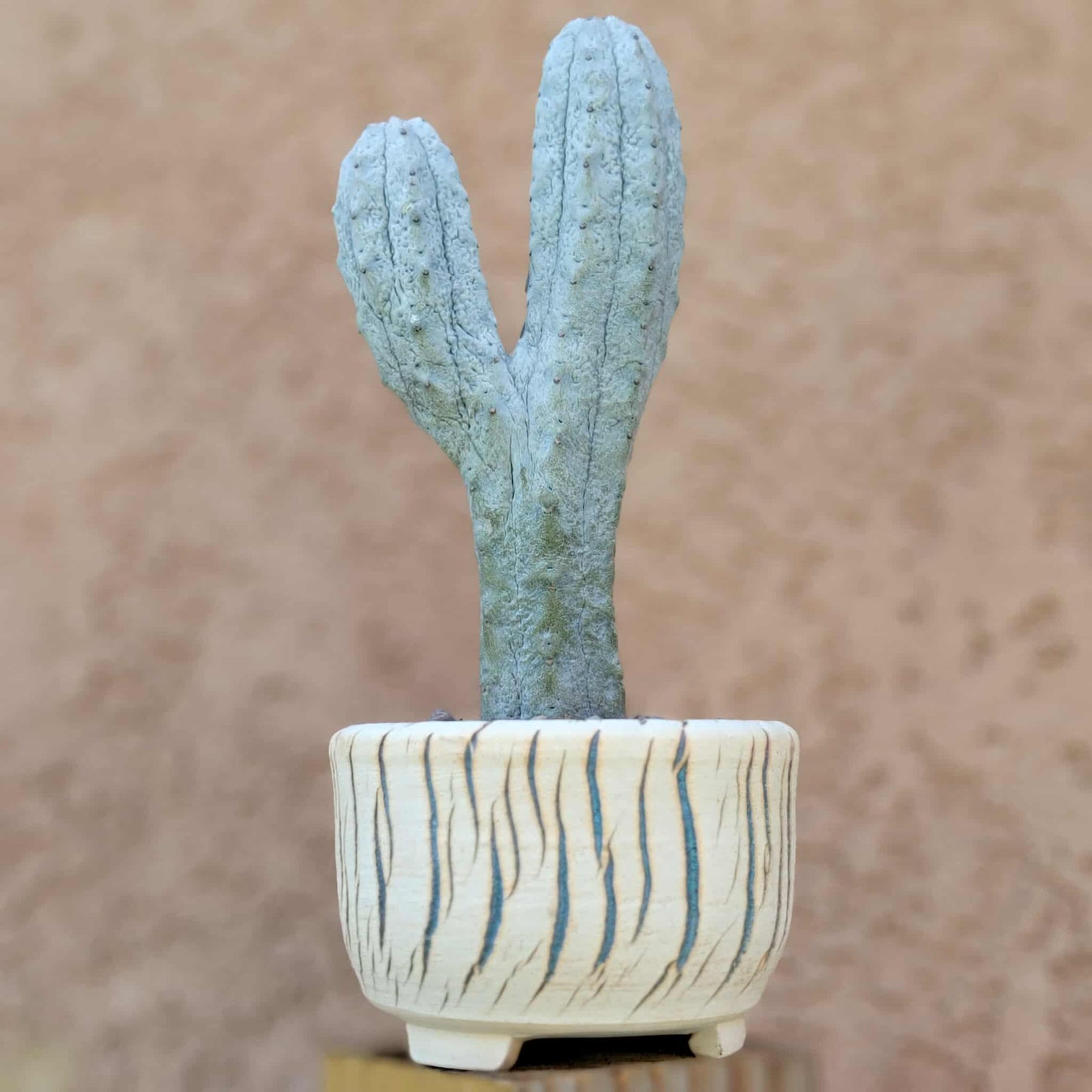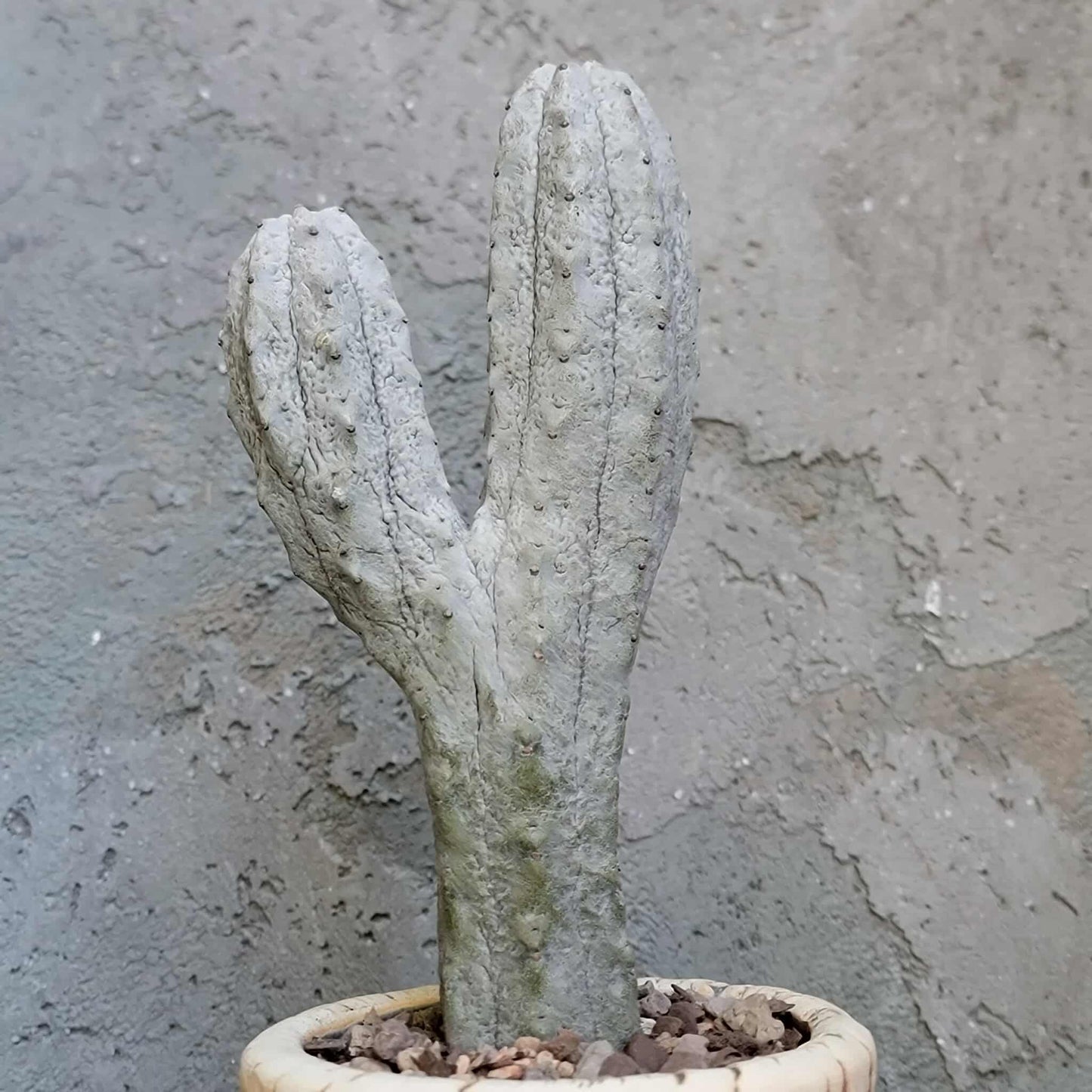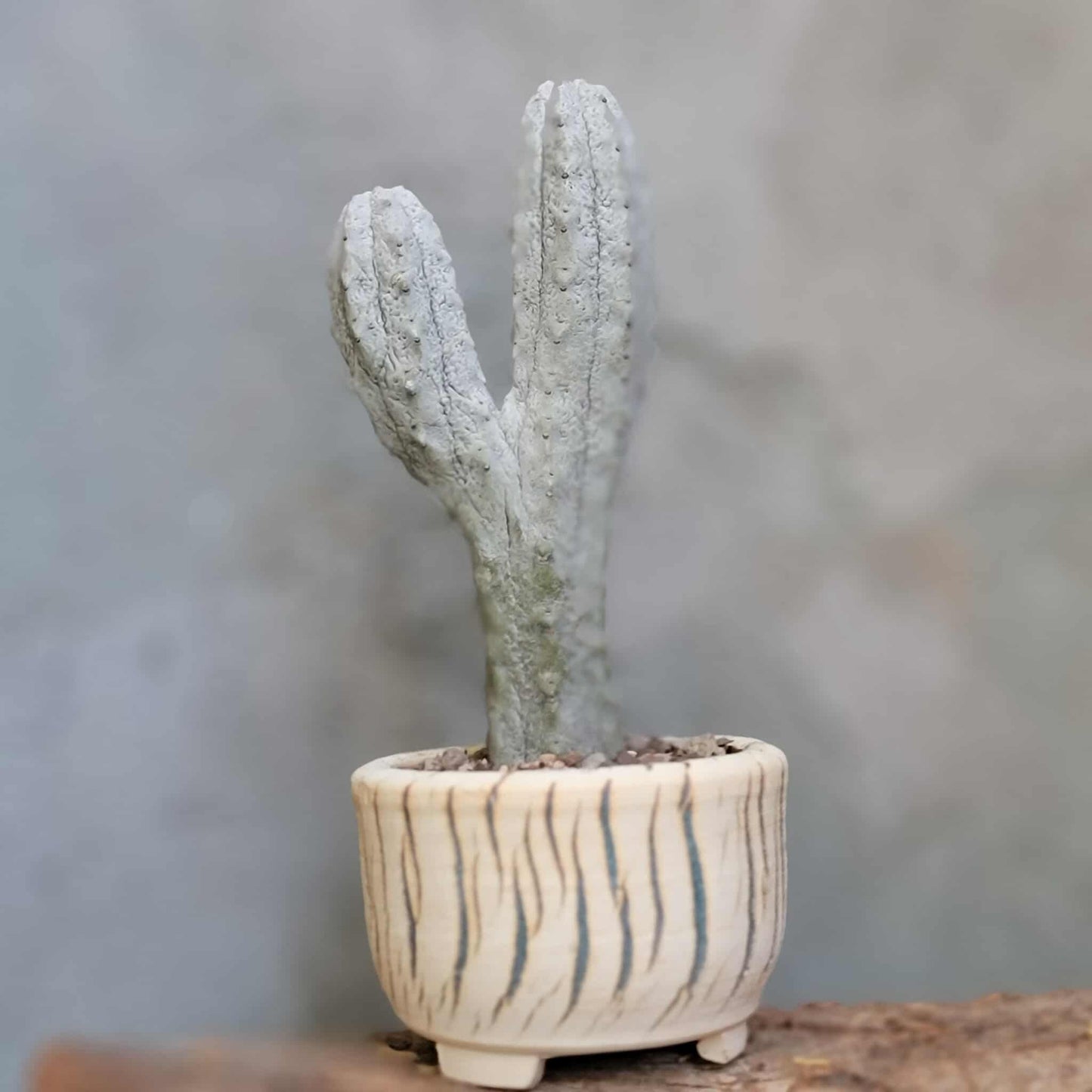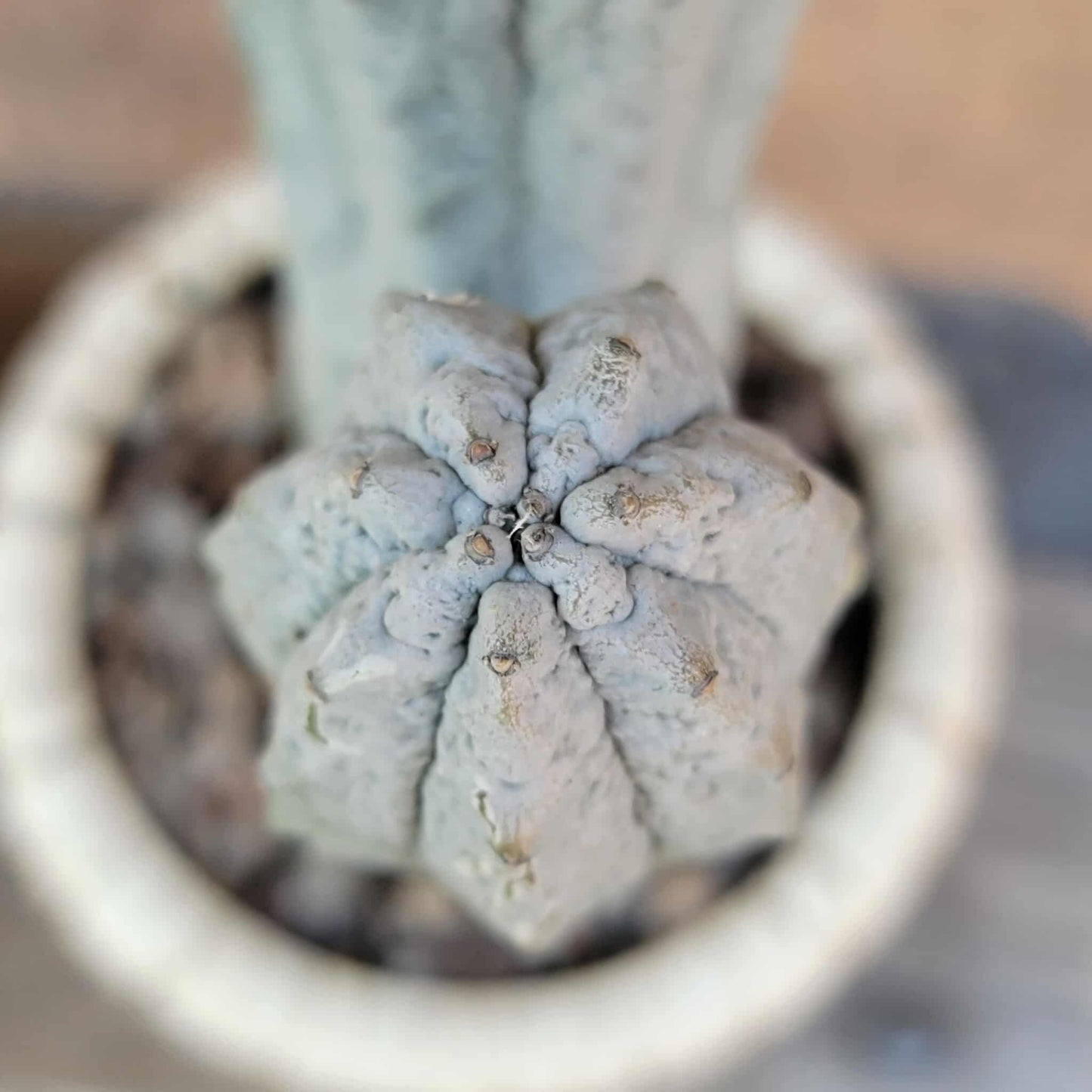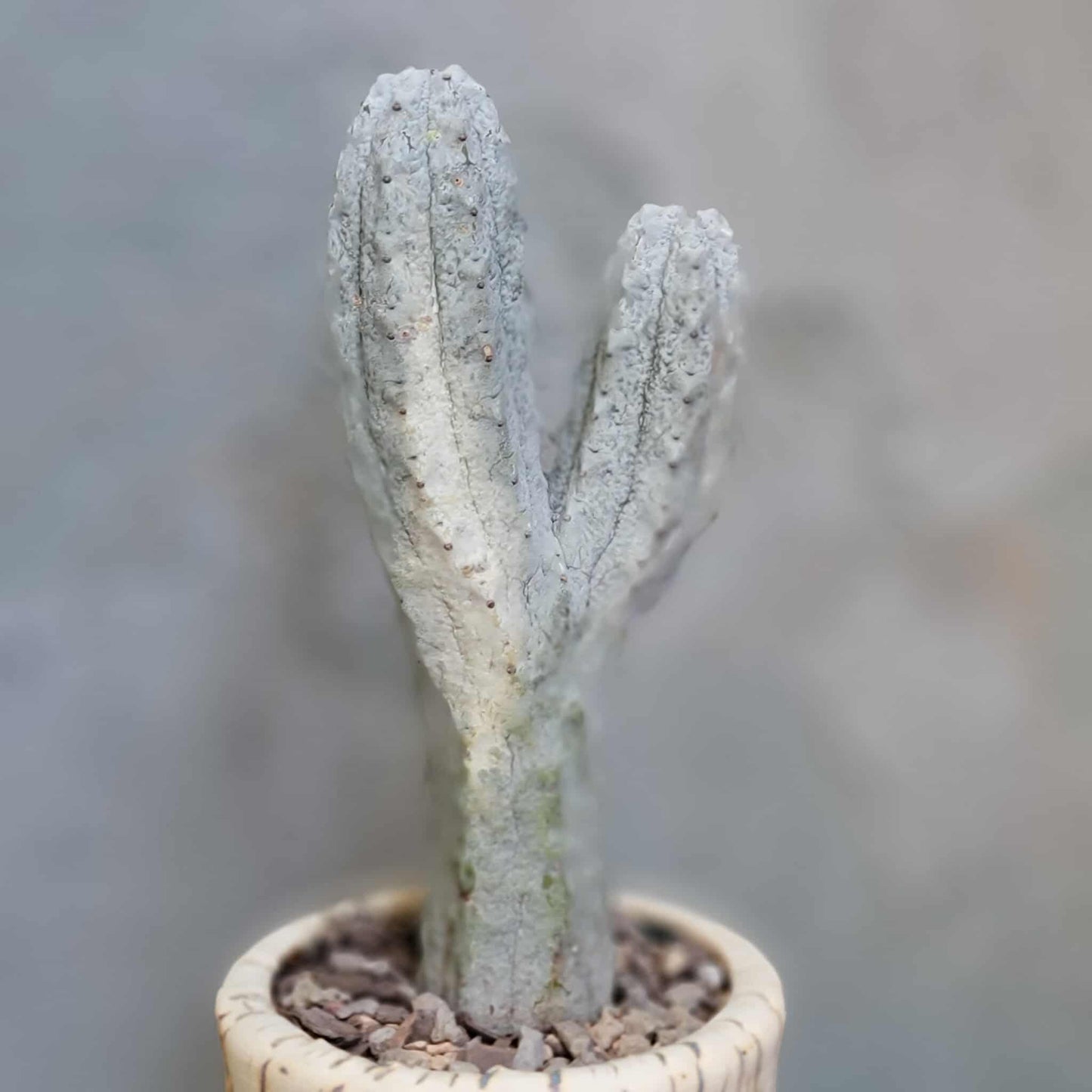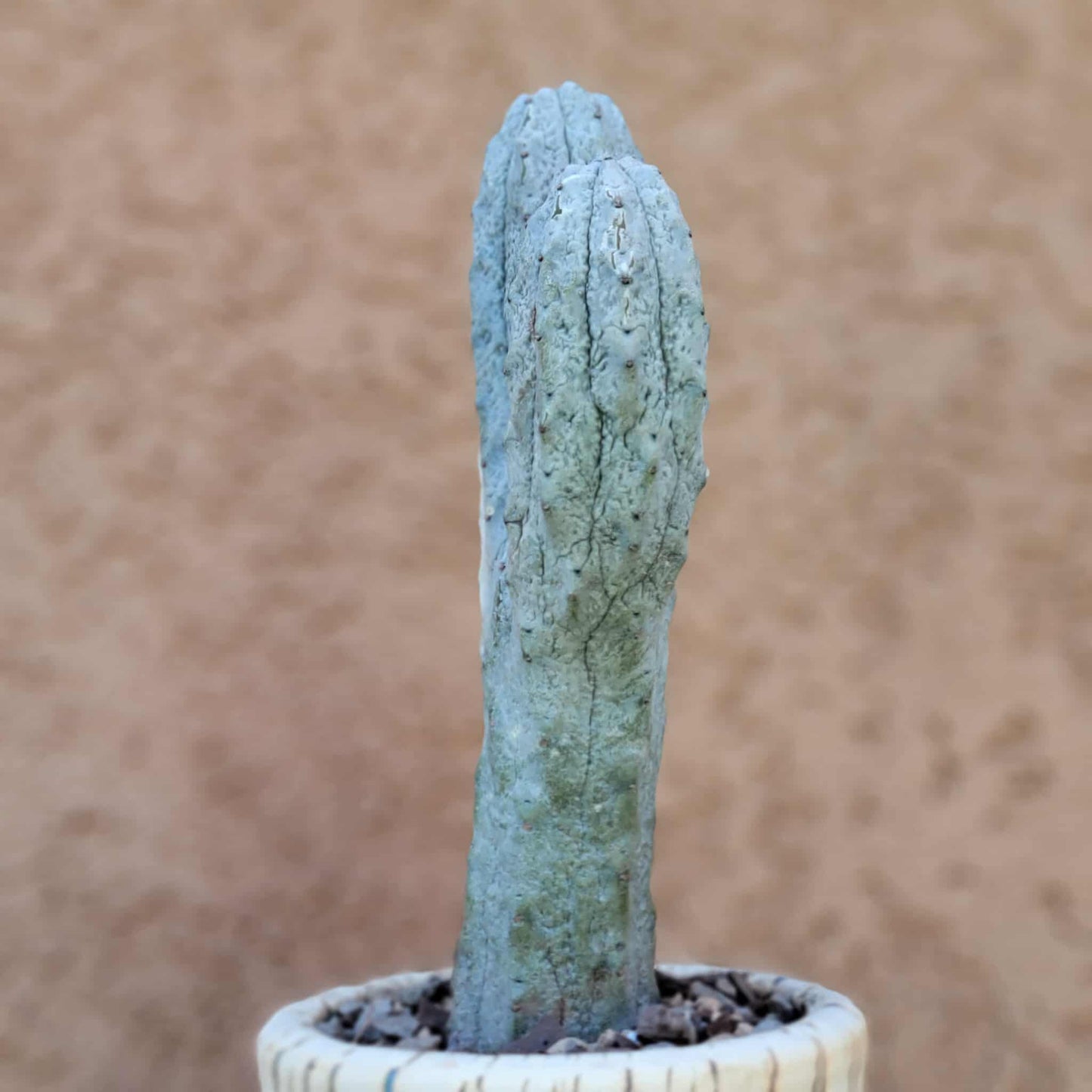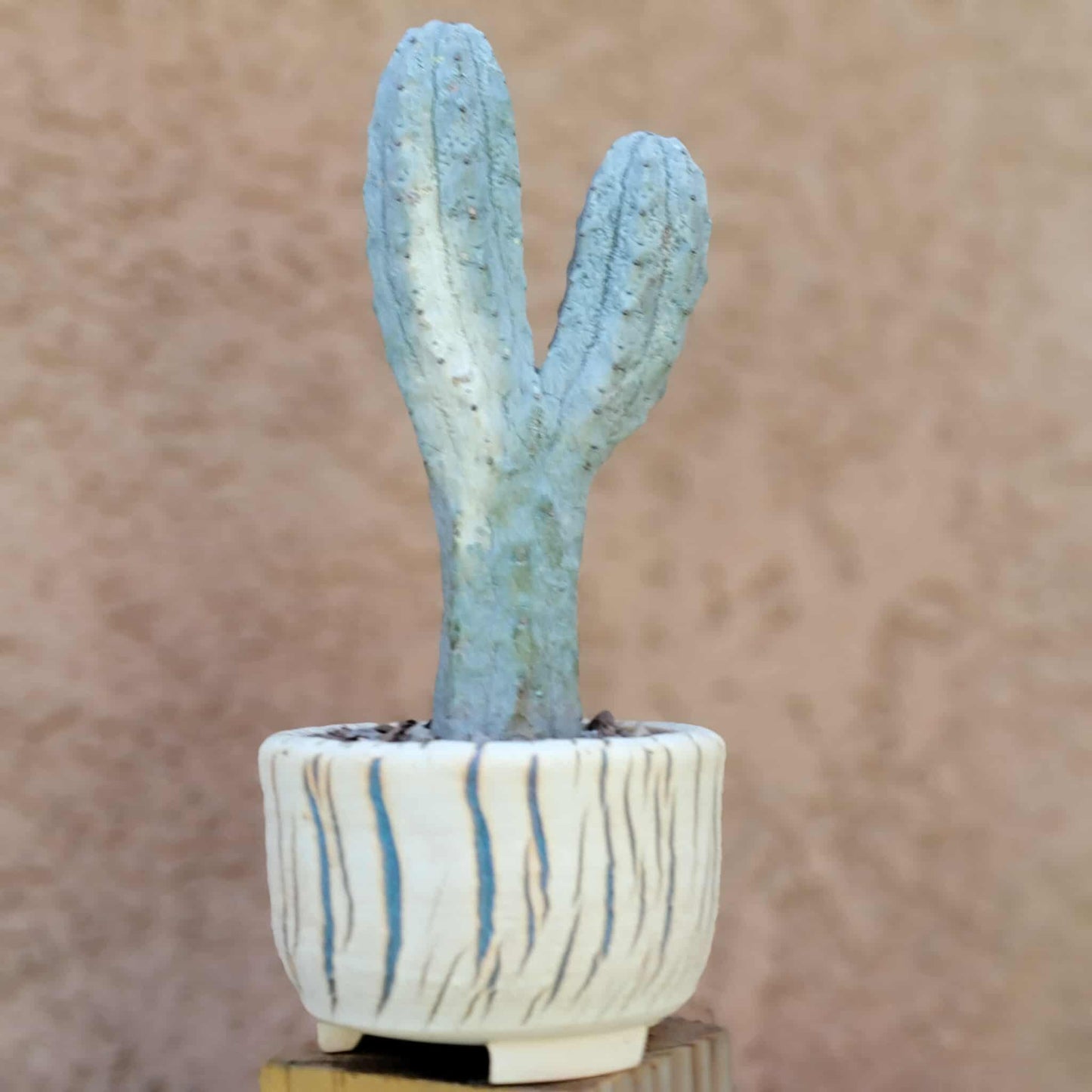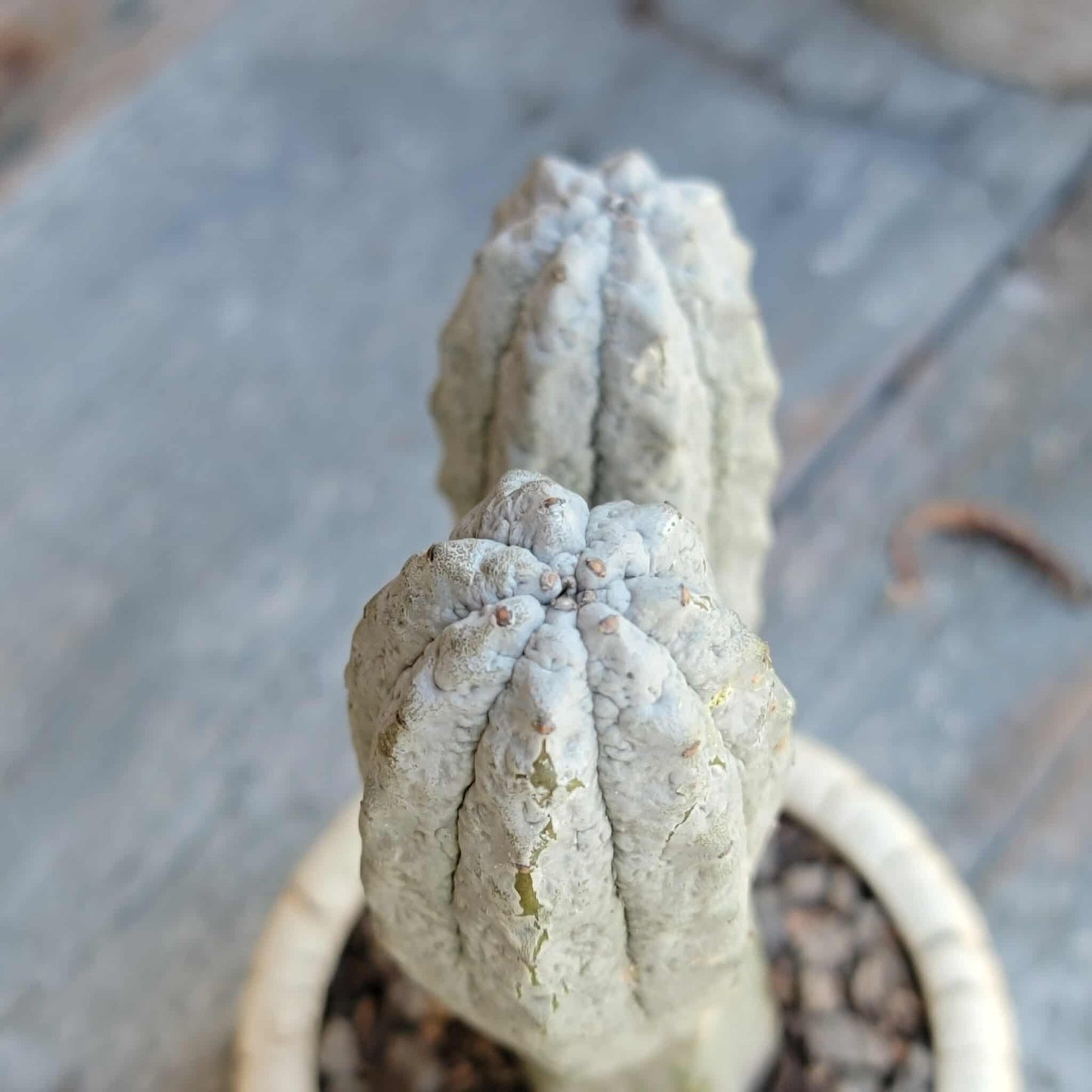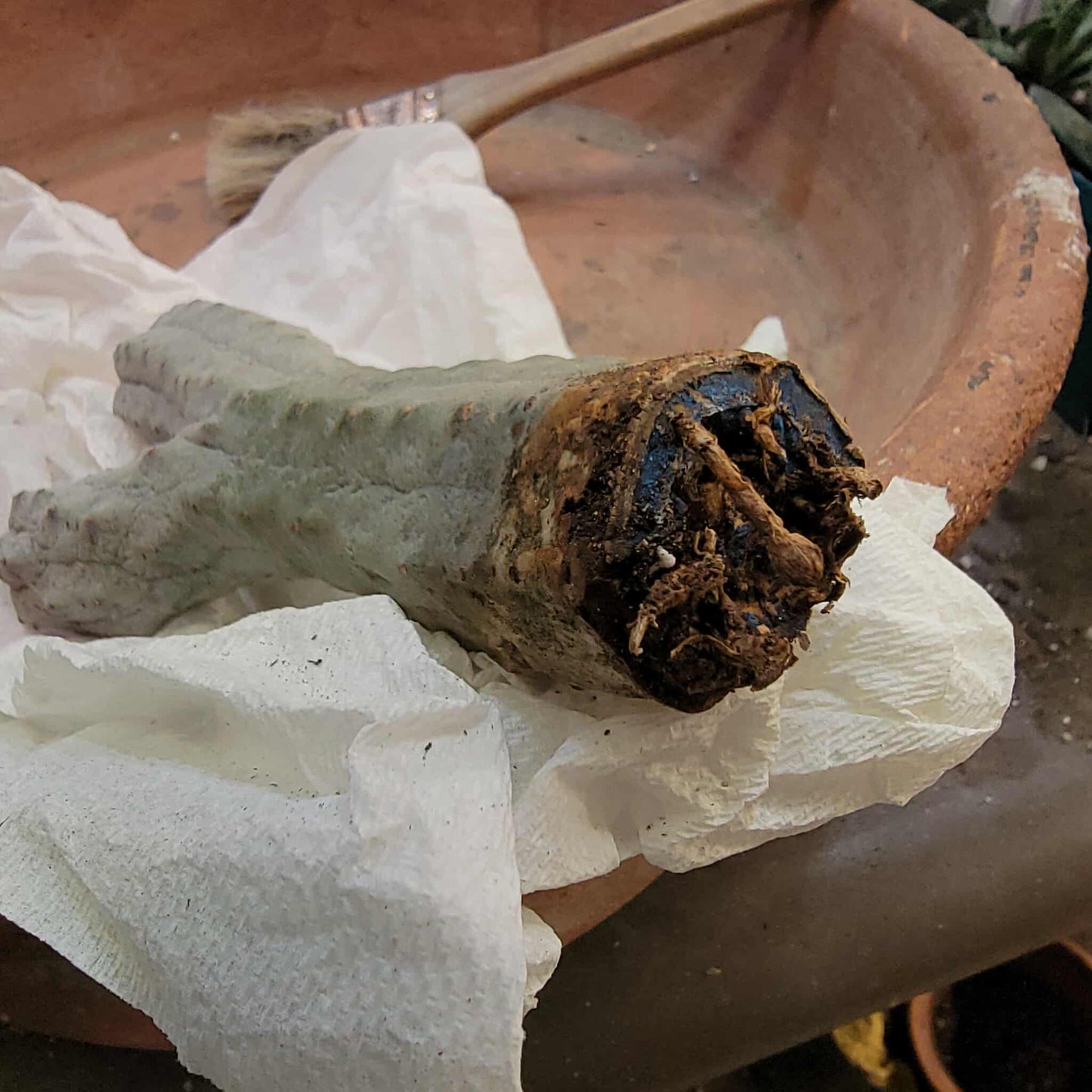Shangri-Ha Cactus Ranch
Euphorbia abdelkuri monstrous
Euphorbia abdelkuri monstrous
Couldn't load pickup availability
Euphorbia abdelkuri monstrous
You will receive this exact specimen.
Measures 7" tall
Roots as shown.
Showcased here in one-of-a-kind handmade pottery (sold separately).
Will be shipped bare root.
A monstrous Euphorbia abdelkuri is a rare and highly sought-after form of the species, defined by its crested or "monstrose" growth. Instead of growing in its typical columnar, candelabra-like shape, the meristem (the growth tip) mutates and spreads out, creating a flattened, fan-like, or wildly contorted shape.
Standard vs. monstrous growth
|
Feature |
Standard Euphorbia abdelkuri |
Monstrous Euphorbia abdelkuri |
|
Growth form |
Upright, thick, smooth, grey-green columns that branch to form a candelabra. |
Flattened, folded, and irregular fan-like growth, which can create a unique, undulating sculpture-like appearance. |
|
Rarity |
Considered a rare and coveted succulent. |
Extremely rare and valuable, even more so than the standard form. |
|
Appearance |
Often compared to a grey, wax-like candle due to its smooth texture and lack of leaves or spines. |
The chaotic growth pattern and unique folds of the crested stems make every specimen truly one-of-a-kind. |
Key Characteristics:
- Appearance: It has a distinctive grey color, sometimes shining with iridescence in the sun, and forms densely branched, candelabra-like clumps.
- Size: It usually reaches about 3 feet (1 meter) in height, though some wild plants can grow larger.
- Unique Features: It lacks leaves and spines, giving it a peculiar wax-like appearance, like a grey candle with melted wax.
- Toxicity: Like other members of the Euphorbia genus, it contains a milky sap (latex) that is toxic and can be highly irritating, especially to the eyes and skin.
Origin and Habitat:
- Native Range: It is endemic to Abd al Kuri, an island in the Socotra Archipelago south of Yemen.
- Habitat: It grows in rocky, arid areas, typically at elevations of 150-270 meters (492-886 feet).
Cultivation Requirements:
- Light: Prefers full sun (6-8 hours of direct sunlight) but filtered light during the hottest part of the day can prevent bleaching.
- Temperature: Thrives in temperatures between 20°C and 30°C (68°F to 86°F), and must be protected from frost.
- Soil: Requires well-draining soil, such as a sandy or cactus mix, to prevent root rot. It should not hold excessive moisture.
- Watering: Water thoroughly in the summer, allowing the soil to dry out between waterings. In winter, water only when the soil is completely dry.
Uses:
- Ornamental: Popular as a houseplant or addition to succulent collections due to its unique appearance.
- Xeriscaping: Drought resistance makes it suitable for water-wise gardens.
- Ecological Role: Attracts pollinators like bees and butterflies, contributing to biodiversity.
